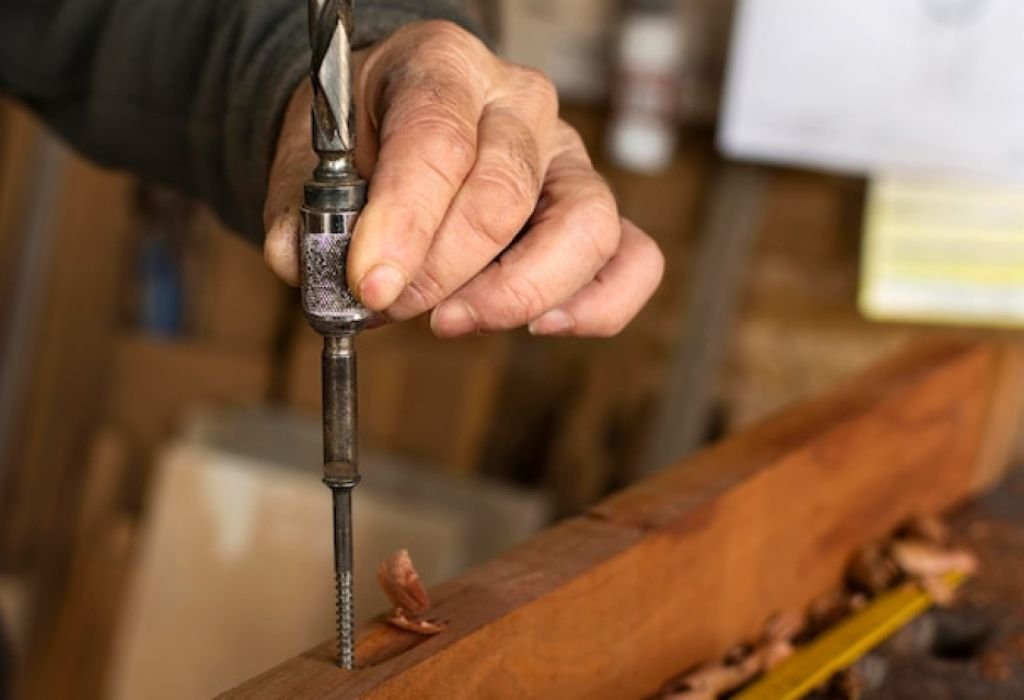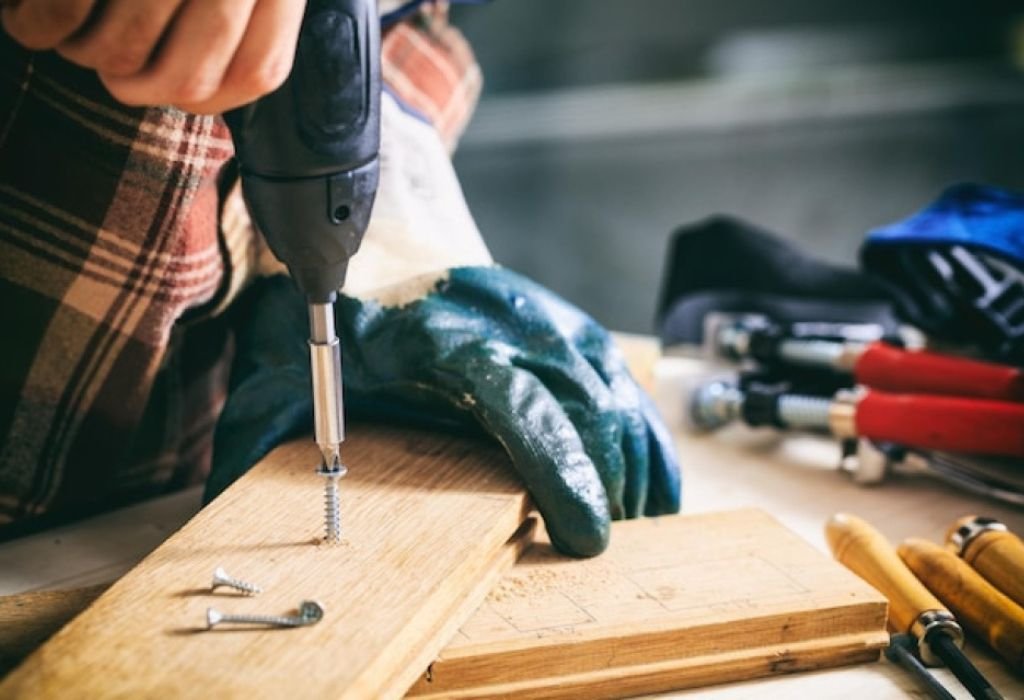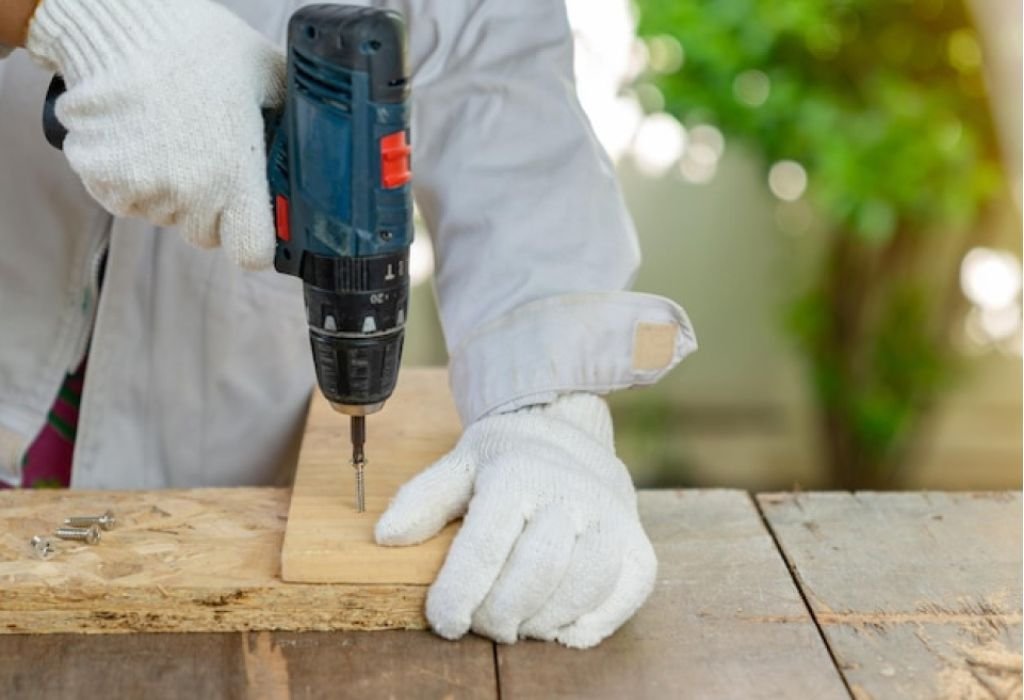Turning on the hot water and being greeted by a sulfur smell can quickly ruin a morning routine.
The culprit is often a worn anode rod inside the water heater, and removing it can be more challenging than expected.
Homeowners frequently discover that the anode rod has seized in place after years of protecting the tank. Standard wrenches slip, breaker bars bend pipes, and frustration builds as the question arises: can an impact driver remove the anode rod safely?
The curiosity comes from the impact driver’s design. It delivers rapid bursts of torque that break screws loose effortlessly.
But a water heater anode rod is larger, tighter, and often corroded, making the task less straightforward.
The stakes are high because the anode rod is the primary defense against tank corrosion. Industry data shows that the average storage water heater lasts 8–12 years, but timely anode replacement can extend its life significantly (source).
Meanwhile, over 85% of U.S. homes deal with hard water (source), which accelerates anode wear and makes removal more urgent.
The benefit of using the right tool goes beyond convenience. It prevents damage to the tank, avoids costly leaks, and ensures the new rod seats properly.
Understanding when an impact driver works and when to switch to an impact wrench or breaker bar is critical for both safety and success.
This guide explains whether you can use an impact driver to remove an anode rod, explores the tools and steps involved, and highlights expert tips for efficient water heater maintenance.
Quick Answer: Can an Impact Driver Remove an Anode Rod?

An impact driver can sometimes remove an anode rod, but it is not the ideal tool. These tools are designed for screws and smaller fasteners, not seized 1-1/16″ hex bolts.
A water heater anode rod is often corroded and overtightened, requiring higher torque than a typical driver provides. In these cases, a 1/2″ impact wrench or breaker bar is much more effective.
Using an impact driver with the right adapter and impact-rated socket can work if the rod is not severely stuck. However, relying on it for stubborn rods risks twisting adapters or damaging threads.
Can i use impact driver to remove anode rod?
Yes, but only if the rod is not heavily seized and the driver is paired with an adapter and impact socket.
What tool is recommended for tough anode rods?
A 1/2″ impact wrench or a long breaker bar with a 1-1/16″ socket.
Why does an impact driver struggle?
It delivers rapid impacts but lower torque, which may not be enough for corroded threads.
Is it safe for the tank?
Yes, if used with caution in short bursts, but excessive hammering may stress the tank lining.
When is a driver acceptable?
When the rod was recently installed, lightly torqued, and corrosion is minimal.
What the Anode Rod Does and Why Removal Matters
The anode rod is a sacrificial metal insert designed to corrode before the steel tank does. By attracting corrosive elements in the water, it preserves the water heater’s life.
When the anode is consumed, the tank becomes unprotected. Removing and replacing it ensures continued defense against leaks and rust.
How often should the rod be checked?
Inspect every 1–3 years depending on water quality.
What are signs the rod is spent?
Thin diameter, heavy pitting, or only the steel core left.
Does a worn rod void warranty?
Yes, some manufacturers require timely replacement.
Will a new rod stop sulfur smell?
Often yes, especially if switching to aluminum-zinc or powered anodes.
Can a powered anode replace a sacrificial one?
Yes, powered anodes prevent odor and corrosion without being consumed.
Safety First: Preparing the Water Heater
Before removal, power or gas must be turned off. Water should be cooled, pressure relieved, and a few gallons drained below the anode threads.
Stabilizing the tank prevents twisting. Impact sockets and protective gear are essential for safety.
Should power or gas be off?
Yes, shut off breaker or set gas control to vacation.
Do you drain the entire tank?
No, only drain below the anode port.
Relieve pressure first?
Yes, open a hot faucet and use the T&P valve.
How to prevent tank movement?
Use straps or a helper to brace the tank.
Are impact sockets required?
Yes, they handle sudden torque without shattering.
Tools and Materials You Need
The anode hex usually measures 1-1/16″. A 6-point impact socket and either an impact wrench or breaker bar are standard tools.
Penetrating oil, Teflon tape, and thread sealant make both removal and reinstallation smoother.
What size socket fits?
Most use a 1-1/16″ hex, but confirm on your unit.
Do you need a deep socket?
Some caps require a thin-wall deep socket.
Can a 3/8″ ratchet work?
Only if the rod is not tight, but 1/2″ drive is better.
Which sealant should be used?
PTFE tape with a dab of pipe dope is common.
Is a torque wrench necessary?
Yes, to prevent overtightening during reinstallation.
Step-by-Step: Removing the Anode Rod with an Impact Driver
Apply penetrating oil and allow time to work. Place the impact-rated socket firmly over the hex and align the driver straight.
Use the highest setting and apply short bursts to avoid damaging the threads. If the rod does not budge quickly, switch to a breaker bar.
Start with penetrating oil?
Yes, soak for 10–15 minutes first.
Can heat help?
Yes, but use only safe warming methods, not open flame.
What driver settings work best?
Use maximum torque with quick pulses.
What if the hex rounds off?
Stop and switch to a 6-point socket and breaker bar.
How to stop the tank from spinning?
Brace it with straps or have a helper hold it.
If It Is Stuck: Escalation Methods
A breaker bar with a cheater pipe provides more leverage. Impact wrenches are often the last step before calling a plumber.
Additional tricks include reseating the socket, reapplying penetrant, or tapping the socket with a mallet.
Should you pressurize the tank slightly?
Keeping lines connected helps resist twisting.
How long should you try with a driver?
If it does not move after a few bursts, escalate.
Is left-hand thread used?
No, rods use standard right-hand threads.
Can glass lining crack?
Yes, if side load or over-torque occurs.
When should you call a plumber?
When threads gall, hex deforms, or clearance is too tight.
Installing the New Anode Rod

Choose magnesium, aluminum-zinc, or powered rods based on water quality. Flexible segmented rods are best for tight spaces.
Seal the threads properly, then torque until snug without overtightening.
Which rod helps with odor?
Aluminum-zinc or powered rods are best.
What torque should be applied?
Follow manufacturer guidance, usually snug plus a quarter turn.
Teflon tape or pipe dope?
Both together give a reliable seal.
Can overtightening cause problems?
Yes, it may damage threads or crack fittings.
Do flexible rods work well?
Yes, they solve clearance issues.
Chemistry and Water Quality Factors
Hard water accelerates anode consumption and thread seizing. High temperature also increases corrosion activity.
Replacing rods more often is necessary in such environments.
Does hard water shorten life?
Yes, minerals speed corrosion.
Is magnesium always ideal?
No, it can worsen sulfur odor.
Do softeners change wear?
Yes, softened water may corrode faster.
Does hot water temperature matter?
Yes, higher temps reduce rod lifespan.
Will flushing help?
Yes, it reduces sediment and thread binding.
Gas vs Electric Water Heaters
Gas heaters have venting and clearance obstacles. Electric models often allow easier access to the rod.
Flexible rods and careful clearance planning solve most access issues.
What about gas heaters?
Turn gas control to vacation and move vent hoods if needed.
Are electric tops easier?
Yes, fewer obstructions make removal simpler.
What if clearance is low?
Use a segmented flexible anode.
Do hybrids differ?
Yes, check the manual for placement.
Does vent hardware interfere?
Yes, but it can be removed temporarily.
Costs, Time, and DIY vs Professional
Anode rods cost little compared to tank replacement. DIY saves money but requires the right tools.
Hiring a plumber ensures safe removal and warranty protection.
How long does the job take?
Usually 30–90 minutes.
How much does a rod cost?
Sacrificial rods are affordable, powered anodes cost more.
Should you rent an impact wrench?
Yes, for seized rods it’s worth it.
Does using a driver save money?
Only if the rod is loose and you already own the tool.
Do plumbers guarantee work?
Yes, many provide warranties.
Troubleshooting After Installation

Check for leaks and retighten if necessary. Flush the system to clear discoloration or odor.
Relight gas or reset breakers only after the tank is full.
What if water leaks around the hex?
Shut down and reseal threads.
What if odor persists?
Switch to a different rod type or powered anode.
Is knocking noise normal?
Yes, some expansion sounds are expected.
Why is water discolored?
Initial flushing clears oxide particles.
What if breaker trips?
Ensure elements are submerged before powering.
Making Future Removal Easier
Use potable-water-safe anti-seize or sealant. Record installation date and rod type for tracking.
Inspect rods annually, especially in hard water areas.
Can anti-seize help?
Yes, if it is potable-safe.
When should rods be inspected?
Every year in hard water conditions.
Do powered rods end maintenance?
They reduce replacement but still need checks.
Do filters help?
Yes, sediment filters slow corrosion.
Why log installation?
It helps plan timely replacements.
Conclusion
An impact driver can remove an anode rod in limited cases, but it is not the most reliable choice. For stuck or corroded rods, an impact wrench or breaker bar is safer and more effective.
Replacing anode rods regularly protects water heaters, prevents leaks, and extends their lifespan. Using the right tool ensures the job is faster, safer, and less stressful.
With proper preparation, correct tools, and smart technique, anyone can handle this essential maintenance and keep hot water flowing without worry.

I’m John F. Nicholas, the founder, lead writer, and drill enthusiast behind 101drill.com. With years of hands-on experience in power tools and DIY projects, I created this platform to share practical knowledge, expert tips, and real-world insights to help others master the art of drilling.
